5 Ways to Prevent Overheating of Servo Drives
Overheating of servo drives is a major issue that can lead to equipment failure and downtime in your factory. This leads to huge potential financial losses for your business. To prevent such costs, you must prevent your servo drives from overheating; whether it's Siemens servo drive or any other brand, it’s important to check temps.
While common cooling methods like good ventilation and using coolants are well-known. But there are also less-known techniques that will help you to keep your drives cool. By implementing these techniques, you can make sure that your servo drives run efficiently.
Let's quickly find out what these techniques are and how they will help you to save huge costs on repairing.
-
Optimize the Drive's Duty Cycle
Optimizing the duty cycle is a highly effective way to manage heat – especially in Siemens servo drive. The duty cycle refers to the ratio of operational time to rest time in your drive. By reducing the duty cycle, you allow more time for the drive to cool down between operations.
You can start by carefully analyzing the drive's workload. Then, identify areas where operational time can be minimized without affecting performance.
Adjusting the duty cycle will help you to balance performance and thermal management. This simple change can significantly prevent any chance of overheating. It will also enhance the overall efficiency of your equipment and protect it from early damage.
-
Implement Advanced Thermal Monitoring
Implementing advanced thermal monitoring will also help you to prevent overheating. Thermal monitoring uses sensors to continuously track the temperature of your servo drives. When temperatures approach unsafe levels, the system triggers protective actions. Such actions might include reducing the load or shutting down the drive.
To set thermal monitoring, you will need to integrate thermal sensors with monitoring software in your system. Then, precise temperature thresholds will be set to ensure the system responds accurately to any changes.

This proactive approach of using thermal monitoring will keep your drives within safe temperature limits. It will prevent heat-related failures in your drive and keep it running smoothly. If you are searching for such a tool, you may get it from a good industrial automation CNC PCB board supplier in your area.
-
Leverage Thermal Insulation Materials
Believe it or not, but leveraging thermal insulation materials can be a powerful method to prevent overheating in Siemens servo drives. These materials act as a barrier, reducing heat transfer to and from the drive. By insulating any critical component, you maintain a more stable operating temperature. This is especially important in environments where external heat sources might affect the drive.
To adopt this approach, you must choose insulation materials with high thermal resistance. You must make sure that they are durable and suitable for your specific application.
This approach provides a consistent defense against overheating and will protect your equipment from any damage due to overheating.
-
Use High-Quality Lubricants
Using high-quality lubricants is essential for minimizing heat generated by friction within servo drives. The right lubricant can drastically lower friction between moving parts, which in turn reduces heat buildup. When choosing lubricants, opt for those that are designed specifically for high-temperature environments.
You must make sure that your lubricants are compatible with the materials of your servo drive. Regular maintenance is also key. This includes timely replacement of the lubricants to maintain their effectiveness. Proper lubrication will not only reduce the risk of overheating but also extend the life of your equipment by minimizing most of the wear and tear.
-
Adopt Dynamic Load Balancing
Adopting dynamic load balancing is an advanced method to prevent overheating. It involves distributing the workload evenly across multiple servo drives. This measure ensures that no single drive is overburdened and thus prevents any excessive heat generation.
To implement this approach, you must start by analyzing the operational demands of your system. Then, configure your drives to share the load more evenly.
Such an approach is particularly effective in systems with varying operational loads. It maintains consistent performance without placing any undue stress on individual drives.
Conclusion
Preventing overheating in a Siemens servo drive requires a combination of monitoring, strategic system adjustments, and specialized materials. By applying these five methods, you can keep your drives cool, efficient, and reliable.
If you are searching for a good industrial automation CNC PCB board supplier, then you may contact CNC Tools, LLC and our experts will guide you through all of your CNC products and repairing needs.
